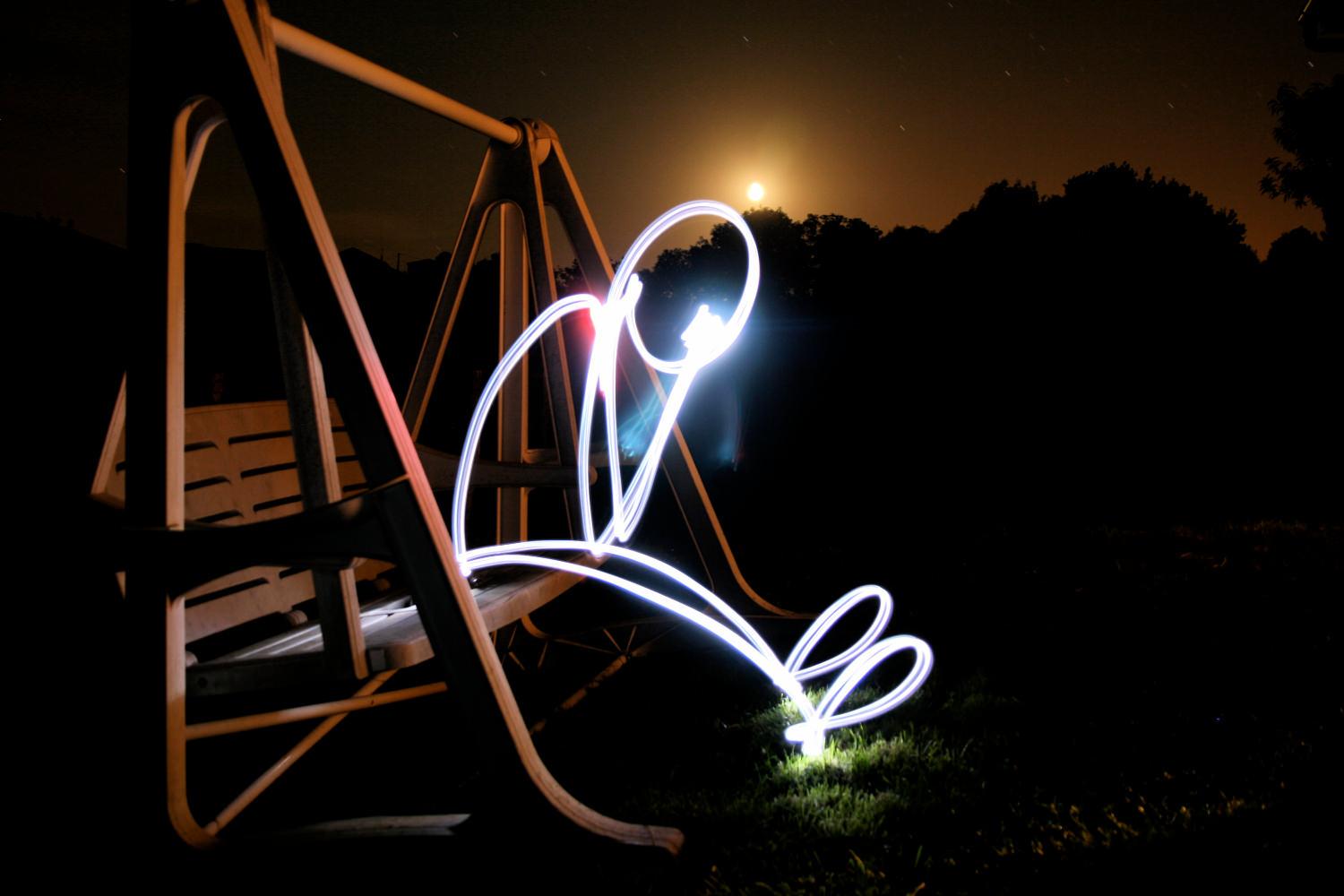Painting with light is a fantastic photography technique where you illuminate parts of your scene with a torch or other light, to add emphasis and colour to certain objects during a long exposure.
It is a very cheap and simple photography technique to try out, although it does take a certain amount of forethought and experimentation to get your shots just right. This trial and error is half of the fun though, and you will learn a lot just by playing around.
There are two different types of light painting, each of which produces a very different effect. They can both be used to create some striking abstract effects, and are a great way to exercise your creativity.
What You'll Need
-
Camera - one which allows you to take long exposures, preferably with a "bulb mode" setting. Set it to its lowest ISO setting and use manual focusing.
-
Tripod - essential for shake-free images.
-
Light source - either a normal torch or a small bulb depending on which type of painting with light you want to try. If you don't have a small bulb, try unscrewing the top of your torch to reveal the bulb.
Exposure Time
This is difficult to judge, so needs some experimentation. A good starting point is to carry out a trial run, where you start behind your camera and then run around your scene, illuminating the objects as you go. Time how long it takes you to do this, and then use that as a starting point for your exposure time.
It may take a while to perfect the exposure time. Image by rafoto.
If you have a lot of light painting to do, you may find that the illuminated areas come out too faint to make an impact. To get around this you'll need to split your scene up into logical areas and take multiple shorter exposures. These can later be combined in a software package like Photoshop or GIMP. To combine your exposures, stack them on top of each other in separate layers and select "Screen" as the blend mode for each.
Painting with Light - "Illumination" Technique
This technique works well when there's very little natural light available, and involves using a torch with a wide beam to illuminate large areas of your scene at a time.
Use a torch to illuminate areas of your scene. Image by William Cho.
Open your shutter and then run around your scene, stopping to shine your torch on the objects or areas that you want illuminated for a few seconds at a time. You might need to take a few exposures to help you judge exactly how long to shine the torch for, but try to give each object in the scene roughly the same illumination time so that they all show up well.
Also remember to stay out of the line of sight of the camera when you've got the torch on or you'll leave a silhouette in front of the object you're illuminating.
Painting with Light - "Light Streaks" Technique
For this type of painting with light you'll need a small bulb such as an LED torch or exposed torch bulb.
Image by Toby Keller.
This time, rather than shining your light at objects, you want to keep it angled so that it is always visible by the camera. Keep it moving through your scene and be careful with the speed you move at because that will affect the light's brightness in the final image.
You can either run randomly through your scene, weaving an interesting trail as you go, or you can use the light to trace the outline of an object in your scene, which produces a really interesting 'neon sign' type effect.
Experimentation is the Key
Whichever painting with light technique you try, it's very hard to nail settings such as exposure time at the first attempt, so be prepared to experiment. Digital cameras have made this exceptionally easy because you can review your results within seconds of taking the photo.
As well as experimenting with settings, why not play around in other ways, for example:
-
Try using a combination of the illumination and light streak techniques in one photo.
-
Use a different light source, such as a candle, match or sparkler.
-
Use coloured bulbs and filters to give your light a different glow, perhaps changing colours for different parts of the scene.
